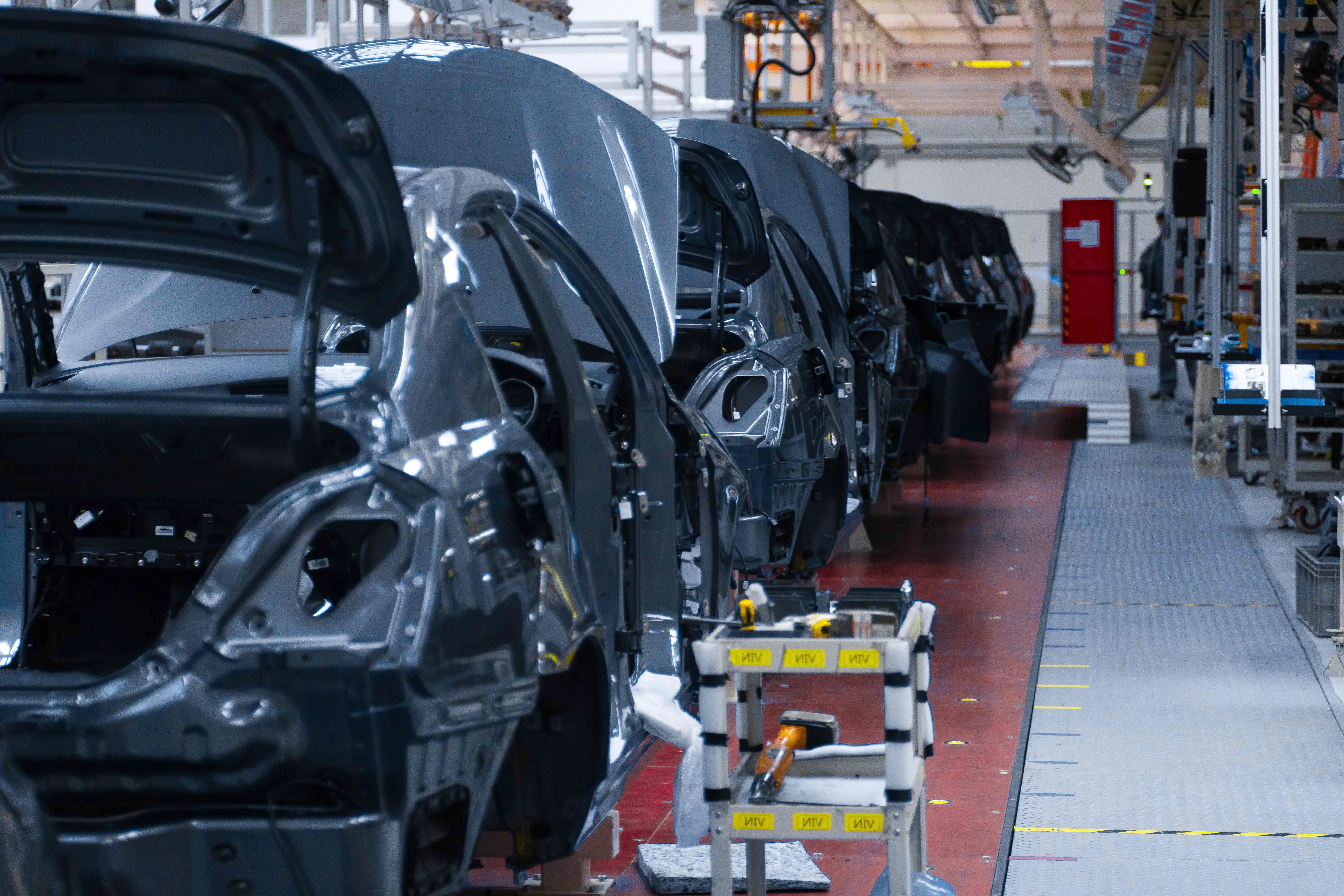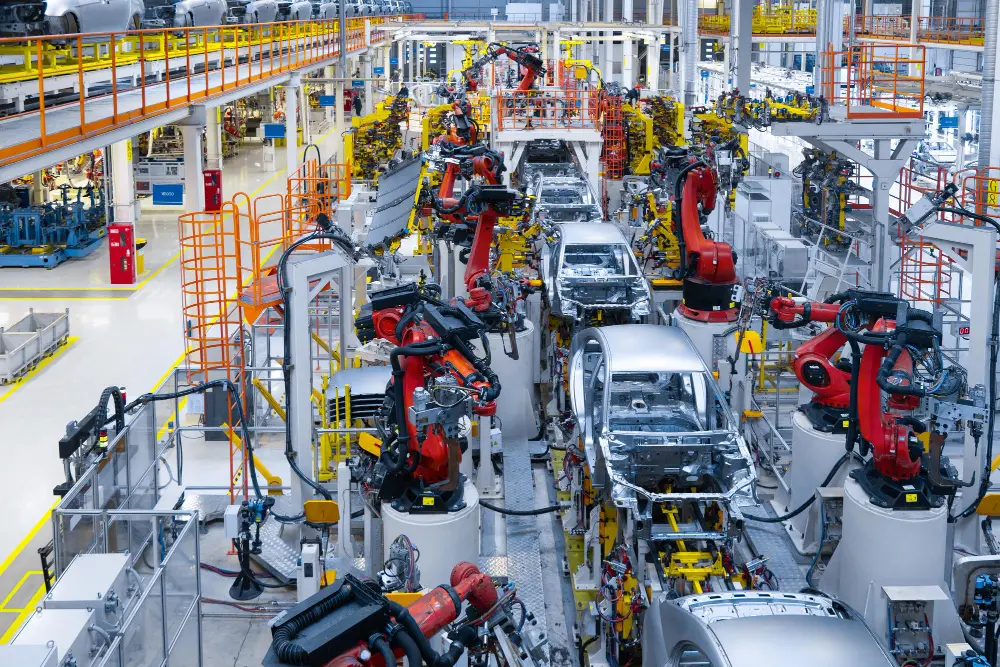The Future of Automotive Supply Chains: Challenges Ahead in 2025

The Automotive Supply Chain plays a pivotal role in the industry's success. It ensures the seamless flow of materials and components necessary for vehicle production. Recent trends, such as the shift from internal combustion engines (ICE) to battery electric vehicles (BEV), significantly impact supply chain dynamics. This transition influences market growth, stagnation, and decline. Additionally, cybersecurity threats have surged by 250% in 2023 compared to 2022, highlighting the need for robust security measures. Addressing these challenges is crucial for maintaining operational efficiency and meeting future demands.
Current State of Automotive Supply Chains
The automotive supply chain is a complex network that ensures the seamless production and delivery of vehicles. This section delves into its key components and recent trends shaping its evolution.
Key Components of Automotive Supply Chains
Raw Material Sourcing
Raw material sourcing forms the backbone of the automotive supply chain. Companies procure essential materials like steel, aluminum, and rubber from global suppliers. These materials undergo rigorous quality checks to meet industry standards. Efficient sourcing strategies help manufacturers maintain cost-effectiveness and ensure timely production.
Manufacturing Processes
Manufacturing processes in the automotive supply chain involve assembling thousands of components into a finished vehicle. Factories employ advanced technologies to enhance precision and efficiency. Automation plays a significant role, reducing human error and increasing production speed. The integration of AI and machine learning further optimizes these processes by analyzing supplier quality and predicting demand.
Distribution Networks
Distribution networks facilitate the movement of finished vehicles from factories to dealerships. These networks rely on a combination of land, sea, and air transport. Efficient logistics management ensures vehicles reach their destinations promptly. Companies continuously refine their distribution strategies to adapt to changing market demands and reduce transportation costs.
Recent Trends and Developments
Technological Advancements
Technological advancements significantly impact the automotive supply chain. Innovations like AI and machine learning provide valuable insights into supplier performance and demand forecasting. These technologies enable companies to make informed decisions, enhancing overall supply chain efficiency. The KPMG Proximity Premium Report highlights how leaders strategically reshape their supply chains for greater efficiencies.
Globalization and Trade Policies
Globalization has expanded the reach of the automotive supply chain, allowing companies to source materials and components from diverse regions. However, trade policies and geopolitical tensions pose challenges. Companies must navigate tariffs and regulations to maintain smooth operations. Strategic planning and adaptability are crucial in mitigating these risks.
Environmental Regulations
Environmental regulations increasingly influence the automotive supply chain. Sustainability targets drive organizations toward greener initiatives. Companies adopt eco-friendly practices to comply with regulatory policies and reduce their carbon footprint. This shift towards sustainability not only meets legal requirements but also aligns with consumer expectations for environmentally responsible products.
Anticipated Challenges in 2025

The automotive industry faces a myriad of challenges as it approaches 2025. These challenges stem from economic factors, technological disruptions, and environmental and regulatory pressures. Each of these elements plays a crucial role in shaping the future of the Automotive Supply Chain.
Economic Factors
Market Volatility
Market volatility presents a significant challenge for the Automotive Supply Chain. Fluctuating demand and unpredictable economic conditions can disrupt production schedules and inventory management. Companies must remain agile to adapt to these changes. They need to employ advanced analytics to forecast demand accurately and adjust their supply chain strategies accordingly. This proactive approach helps mitigate the risks associated with market volatility.
Cost Fluctuations
Cost fluctuations, particularly in raw materials and labor, pose another challenge. The prices of essential materials like steel and aluminum can vary significantly, impacting the overall cost structure of the Automotive Supply Chain. Labor costs also continue to rise, driven by shortages and increased demand for skilled workers. Companies must implement cost-control measures and explore alternative sourcing strategies to maintain profitability.
Technological Disruptions
Automation and AI
Investing in AI-driven analytics can provide valuable insights into supplier performance and demand forecasting, enabling companies to make informed decisions.
Cybersecurity Threats
Cybersecurity threats have surged, posing a significant risk to the Automotive Supply Chain. As companies increasingly rely on digital technologies, they become more vulnerable to cyberattacks. Protecting sensitive data and ensuring the integrity of supply chain operations is paramount. Companies must implement robust cybersecurity measures and continuously monitor for potential threats to safeguard their operations.
Environmental and Regulatory Pressures
Emission Standards
Stricter emission standards are reshaping the Automotive Supply Chain. Governments worldwide are imposing regulations to reduce carbon emissions and promote sustainability. Companies must adapt their manufacturing processes and product offerings to comply with these standards. This shift requires significant investment in research and development to create eco-friendly vehicles and components.
Sustainability Requirements
Companies must adopt sustainable practices throughout their supply chains, from raw material sourcing to manufacturing and distribution. This commitment to sustainability not only meets regulatory requirements but also aligns with consumer expectations for greener products.
Impacts of These Challenges
The automotive industry faces numerous challenges that significantly impact the Automotive Supply Chain. These challenges affect production efficiency, cost management, and global supply chain networks.
On Production Efficiency
Delays and Bottlenecks
Delays and bottlenecks frequently disrupt the Automotive Supply Chain. Manufacturers often struggle to maintain smooth operations due to unforeseen disruptions. These disruptions can stem from various sources, such as supply shortages or logistical issues. Companies must implement robust contingency plans to minimize these delays. By doing so, they can ensure a more efficient production process.
Quality Control Issues
Quality control issues present another challenge within the Automotive Supply Chain. As manufacturers strive to meet high production demands, maintaining quality standards becomes increasingly difficult. Inadequate quality control can lead to defective products, resulting in costly recalls and damage to brand reputation. Companies must invest in advanced quality assurance technologies to uphold product integrity and customer satisfaction.
On Cost Management
Increased Operational Costs
Increased operational costs pose a significant challenge for the Automotive Supply Chain. Rising prices of raw materials and labor contribute to higher production expenses. Companies must adopt cost-effective strategies to manage these expenses. By optimizing resource allocation and streamlining processes, they can mitigate the impact of rising costs on their bottom line.
Pricing Strategies
Pricing strategies play a crucial role in managing the financial impact of supply chain challenges. Companies must carefully balance competitive pricing with profitability. They need to consider factors such as market demand, production costs, and consumer expectations. By employing dynamic pricing models, companies can adapt to changing market conditions and maintain a competitive edge.
On Global Supply Chain Networks
Trade Barriers
Trade barriers significantly affect the Automotive Supply Chain. Tariffs and trade restrictions can hinder the flow of goods across borders. Companies must navigate these barriers to maintain efficient supply chain operations. Strategic partnerships and diversification of suppliers can help mitigate the risks associated with trade barriers.
Regional Dependencies
Regional dependencies create vulnerabilities within the Automotive Supply Chain. Relying heavily on specific regions for raw materials or components can lead to supply disruptions. Companies must diversify their sourcing strategies to reduce dependency on any single region. By doing so, they can enhance supply chain resilience and ensure a steady flow of materials.
Strategies to Overcome Challenges

The automotive industry must adopt innovative strategies to address the challenges facing the Automotive Supply Chain. These strategies focus on technological advancements, policy adaptations, and effective risk management.
Technological Innovations
Digital Supply Chain Solutions
Digital supply chain solutions revolutionize the Automotive Supply Chain by enhancing visibility and efficiency. Companies implement advanced software systems to monitor and manage every aspect of the supply chain in real-time. These systems provide valuable insights into inventory levels, supplier performance, and demand forecasts. By leveraging digital tools, companies can optimize their operations, reduce lead times, and improve overall supply chain resilience.
Blockchain for Transparency
Blockchain technology offers a robust solution for enhancing transparency within the Automotive Supply Chain. It creates an immutable ledger that records every transaction and movement of goods. This transparency helps companies track the origin and journey of components, ensuring authenticity and compliance with regulatory standards. Blockchain also facilitates secure data sharing among stakeholders, reducing the risk of fraud and errors. By adopting blockchain, companies can build trust with consumers and partners, ultimately strengthening their supply chain networks.
Policy and Regulatory Adaptations
Collaborative Policy Making
Collaborative policy making plays a crucial role in addressing the challenges of the Automotive Supply Chain. Industry stakeholders, including manufacturers, suppliers, and government agencies, must work together to develop policies that support sustainable growth. By fostering open communication and cooperation, these entities can create a regulatory environment that encourages innovation and efficiency. Collaborative efforts ensure that policies align with industry needs and promote long-term stability.
Incentives for Sustainable Practices
Incentives for sustainable practices drive companies to adopt eco-friendly initiatives within the Automotive Supply Chain. Governments and organizations offer financial rewards and tax benefits to encourage the implementation of green technologies and processes. These incentives motivate companies to invest in renewable energy, reduce waste, and minimize their carbon footprint. By prioritizing sustainability, companies not only comply with regulations but also meet consumer expectations for environmentally responsible products.
The automotive supply chain faces significant challenges, including economic volatility, technological disruptions, and environmental pressures. These challenges impact production efficiency, cost management, and global networks. Proactive strategies are essential for navigating these complexities. Companies should prioritize collaboration with suppliers and ecosystem partners to accelerate innovation and respond swiftly to market changes. Multi-sourcing enhances agility and resilience, reducing stoppages and recalls. Data-driven forecasting and investment in vocational education and robotics can stabilize labor shortages. By fostering resilience and foresight, the industry can ensure a sustainable and innovative future.
See Also
Expert Advice for Overcoming Automotive Supply Chain Challenges
Unlocking Your Automotive Supply Chain's Full Potential
5 Game-Changing Trends for Future Supply Chain Efficiency
